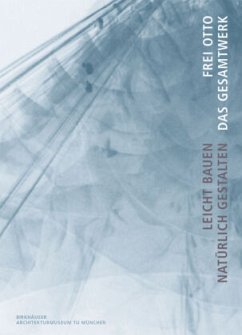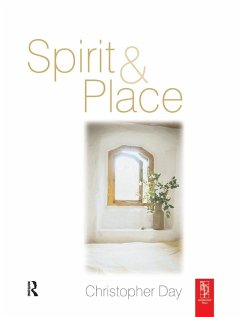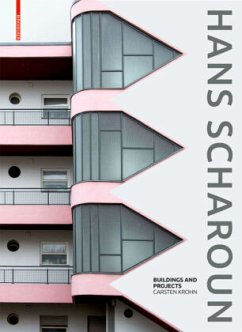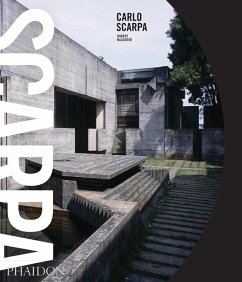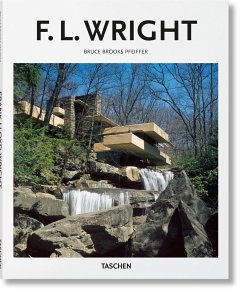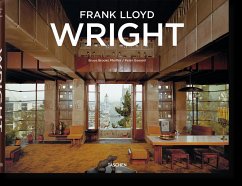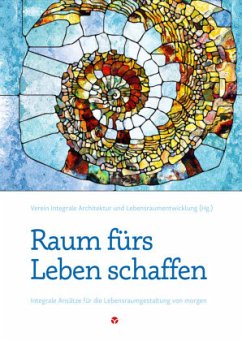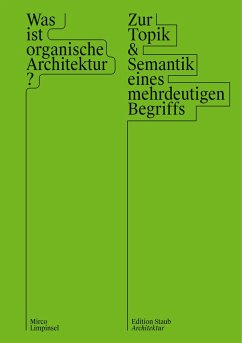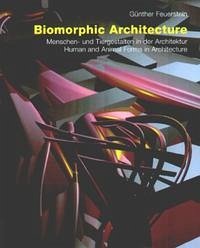
Biomorphic Architecture
Menschen- und Tiergestalten in der Architektur. Dtsch.-Engl.
Versandkostenfrei!
Versandfertig in 2-4 Wochen
68,00 €
inkl. MwSt.

PAYBACK Punkte
0 °P sammeln!
Mankind needs to relate to inanimate matter as well. Mankind "animates" stones, mountains, rivers, yes even the world and the cosmos so that it can communicate with them. There is quite clearly a need to initiate individual contact also with architecture, with our surroundings. This is easier if we can also recognize certain characteristics of our own bodies in the constructed bodies of thebuilt environment. We can go well beyond the common phenomenon of corporeality to find countless analogies between buildings and human beings, thus demonstrating a first step towards an anthropomorphy of arc...
Mankind needs to relate to inanimate matter as well. Mankind "animates" stones, mountains, rivers, yes even the world and the cosmos so that it can communicate with them. There is quite clearly a need to initiate individual contact also with architecture, with our surroundings. This is easier if we can also recognize certain characteristics of our own bodies in the constructed bodies of thebuilt environment. We can go well beyond the common phenomenon of corporeality to find countless analogies between buildings and human beings, thus demonstrating a first step towards an anthropomorphy of architecture.
These statements become clearer if a column is interpreted as an anthropomorphic element. If certain features in fa ades are reminiscent of a pair of eyes, then architectural physiognomy helps us to a dialogue: the building is looking at us, in the direct sense of the word.
In the world of Christian symbolism the church - spatially and theologically - is constantly co mpared withthe body of Christ, and thus becomes an image of a man-god. The church is the "mysterious body of Christ", and all parts of the building become metaphors of Christ and his congregation.
The "organic" architecture of the 20th century in its three-dimensional and sculptural manifestations constantly addresses the corporeality of biological creatures. In very recent times we are surprised how often the metaphor of man and architecture occurs: in the work of Ricardo Porro, Imre Makovecz, Santiago Calatrava, Reima Pietilae and others.
Zoomorphic architecture is a variant of anthropomorphic architecture. Elephants, birds, fishes, insects do not just appear in many current works of modern architecture like those of Frank O. Gehry and Coop Himmelblau, they are also absurd manifestations of trivial architecture that has also to be considered in its everyday quality.
If we are talking about "expanded" architecture, then cities, the world and even the cosmos ha ve to be included. Mankind isstill moved by the transfer from man as microcosm to the universe as macrocosm.
Guenther Feuerstein, who was a professor at the Hochschule fuer Gestaltung in Linz and also a lecturer at the Akademie der bildenden Kuenste and at the Technische Universitaet in Vienna until his retirement, must be considered the catalyst in the Viennese post-war architectural scene, as almost all architectural avant-garde groups of the town have come from his circle.
These statements become clearer if a column is interpreted as an anthropomorphic element. If certain features in fa ades are reminiscent of a pair of eyes, then architectural physiognomy helps us to a dialogue: the building is looking at us, in the direct sense of the word.
In the world of Christian symbolism the church - spatially and theologically - is constantly co mpared withthe body of Christ, and thus becomes an image of a man-god. The church is the "mysterious body of Christ", and all parts of the building become metaphors of Christ and his congregation.
The "organic" architecture of the 20th century in its three-dimensional and sculptural manifestations constantly addresses the corporeality of biological creatures. In very recent times we are surprised how often the metaphor of man and architecture occurs: in the work of Ricardo Porro, Imre Makovecz, Santiago Calatrava, Reima Pietilae and others.
Zoomorphic architecture is a variant of anthropomorphic architecture. Elephants, birds, fishes, insects do not just appear in many current works of modern architecture like those of Frank O. Gehry and Coop Himmelblau, they are also absurd manifestations of trivial architecture that has also to be considered in its everyday quality.
If we are talking about "expanded" architecture, then cities, the world and even the cosmos ha ve to be included. Mankind isstill moved by the transfer from man as microcosm to the universe as macrocosm.
Guenther Feuerstein, who was a professor at the Hochschule fuer Gestaltung in Linz and also a lecturer at the Akademie der bildenden Kuenste and at the Technische Universitaet in Vienna until his retirement, must be considered the catalyst in the Viennese post-war architectural scene, as almost all architectural avant-garde groups of the town have come from his circle.
Dieser Artikel kann nur an eine deutsche Lieferadresse ausgeliefert werden.



